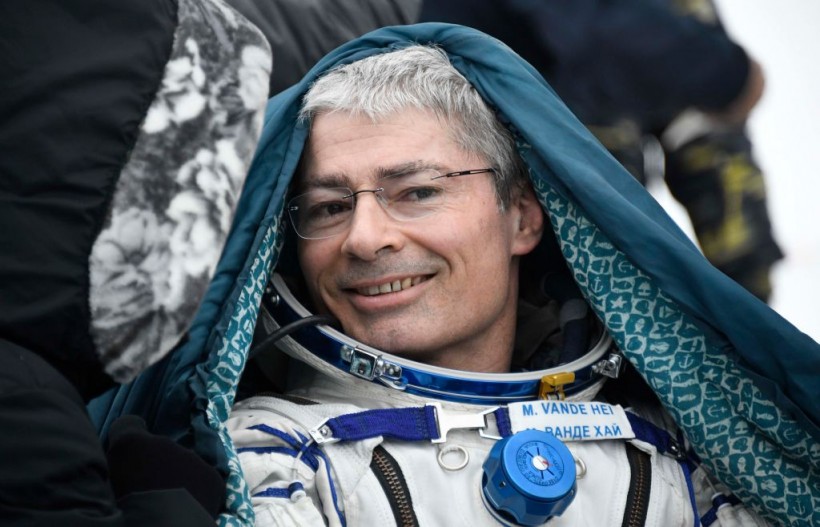NASA astronaut Mark Vande Hei broke the record on having the longest U.S. spaceflight inside the International Space Station. NASA's astronaut has broken the record after spending 355 days in low-Earth orbit.
NASA Astronaut Mark Vande Hei
Retired U.S. Army officer and current NASA astronaut Mark Vande Hei sets the record for having the longest U.S. spaceflight on the International Space Station by spending almost a year in space. NASA's record was previously held by Astronaut Scott Kelly, by 15 days.

NASA astronaut Mark Vande Hei sets the record on having the longest U.S. spaceflight. Spending almost one year in space, Vande Hei contributed significant research about human space flight.
NASA Administrator Bill Nelson expressed his delight to the agency's achievement and extended his congratulations to Vande Hei.
Today @Astro_Sabot makes history, surpassing @StationCDRKelly's record of the single longest spaceflight by a NASA astronaut!
— Bill Nelson (@SenBillNelson) March 15, 2022
Mark's stay will help us understand the effects of longer duration missions in space.
Mark, thanks for your service & congrats! https://t.co/7RYyujaNdS
NASA's previous title holder himself, Scott Kelly, also took to Twitter to congratulate the achievement of the space agency and his colleague Vande Hei.
Congratulations @Astro_Sabot! Broken records indicate progress. Looking forward to seeing you safely home soon. Ad Astra! https://t.co/2sjWMnytn0
— Scott Kelly (@StationCDRKelly) March 15, 2022
According to NASA, Nelson stated, "Mark's record-setting mission and his contributions to science are paving the way for more people to travel to space on longer duration missions as the agency pushes the boundaries of exploration to the Moon and Mars. Thank you for your service, Mark, and congratulations!"
The NASA administrator stated that their astronauts are incredible explorers who are assisting them in furthering the world's understanding of how humans can live and work in space for extended amounts of time.
It was previously reported that the return of Mark Vande Hei is in jeopardy due to the geopolitical aggression between the sanctions imposed by the U.S. towards Russia. Due to the heat between Russia and Ukraine, the Director General of Roscosmos Dmitry Rogozin made a public remark threatening to leave Vande Hei in space.
However, NASA recently confirmed that Mark Vande Hei is scheduled to return back to planet Earth this March 30, along with Russian cosmonauts Pyotr Dubrov and Anton Shkaplerov in the Russian rocket Soyuz.
NASA's Human Research Studies
Mark Vande Hei contributed to numerous human space studies while on the International Space Station.
One of the studies he helped investigate is NASA's research about the Vegetable Production System. Vande Hei contributed to figuring out how to grow and harvest vegetables while in space.
The goal of the investigation is to develop a food production system that will allow astronauts to meet their dietary requirements with fresh vegetables grown in zero gravity.
Another vital research he studied in the ISS is called Spaceflight Standard Measures (SMM). These are space measures implied in the human body. This study aims to further characterize the changes that occur in the body of the astronauts as they launch from the Earth to space and during space flight. This is also a biological study of the human body about the astronauts' sleep-wake cycle, hormonal changes, adjustments in proteins, cells, and immune system.
In addition, Vande Hei also helped in studying food in space. A formal investigation about the effects of repeatedly eating the same food in space for a prolonged period of time. Menu fatigue can have serious consequences in space, resulting in decreased appetites, nutritional deficiencies, and a reduction in overall body mass.
It is hoped that the findings will aid researchers in improving the design of current and future space food systems.
Furthermore, Vande Hei is the first NASA astronaut who embarked on an extended mission to assist researchers in their investigation into whether a modified spaceflight diet can help humans adapt more quickly to space travel.
Lastly, Vande Hei also studied about the the potential injuries and bruises of astronauts acquired by astronauts during force landing. The findings of this study will also aid NASA in the development of protective measures for future spacecraft.
These research and studies will tremendously help NASA and the overall human space missions to come.
Related Article: NASA Hubble Image Shows Epic View of 2 Close Galaxies 200 Million Light-Years Away From Earth! [See Photo Here]














